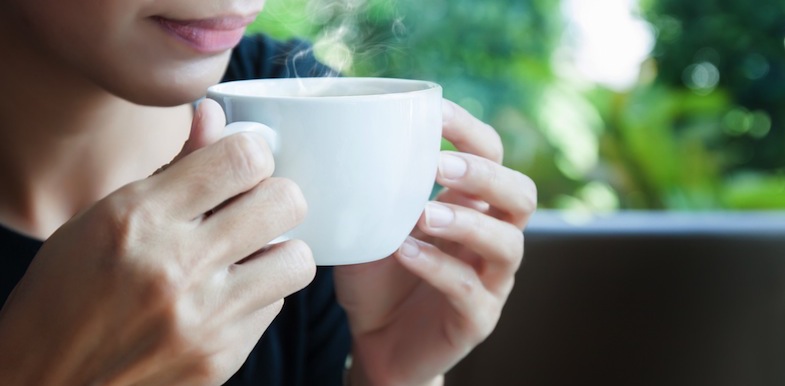
Tea is a time-honored tradition that was brought to our culture from the Far East through the English empire. Human history is literally steeped in tea. In ancient China, tea was frequently used for medicinal purposes. It eventually made its way to Europe and, especially, England where it became popular in the 17th century. The English then transported tea back to the East by establishing production in India. Here’s how you can use hot teas today to help with pain along with other winter-time ailments.
What is tea?
The ancient Chinese had an early understanding of herbal remedies and how different compounds had different effects on the body. One of the easiest ways to extract and consume the properties of medicinal plants was to steep and ingest it in the form of a tea. Tea refers to both a specific plant as well as the act of infusing herbs in boiling water.
The most common types of tea include:
- Black tea: This is the first of four teas that derive from the leaves of the camellia sinensisplant that is native to China. Black tea is the most common and is typically used in drinks such as ice tea or sweet tea. The leaves of the plant are oxidized when making black tea, which is what causes the darker color when steeped.
- White tea: This tea is made from the lightly dried leaves and buds of the camellia sinensisplant before it can be exposed to oxidation. While black tea is named for the color of the resulting liquid, white tea is actually yellow in color once steeped.
- Green tea: This tea, green in color as the name indicates, is extremely popular in Asian cultures today. It is believed to have a number of healthy properties. It is also cultivated from the camellia sinensis plant but it is lightly processed before brewing.
- Oolong tea: Oolong tea is a highly oxidized version of camellia sinensis tea where the leaves are allowed to dry in the sun and then curled or twisted before used. There are several varieties of oolong tea that can have varying flavor profiles, such as sweet or woody.
- Rooibos tea: Grown in South Africa, rooibos tea is not technically a tea at all but an herb used just like teas created from the camellia sinensis Rooibos tea is also referred to as red tea. It is usually prepared just like black tea and served with sugar, milk, or honey. Rooibos has an earthy vanilla taste which makes it a great entry level tea for individuals who don’t like the taste of black teas.
- Herbal tea: Any infusion made from plants that are not part of the camellia sinensis plant are considered herbal teas. These can include peppermint, ginger, chamomile, or lemon balm. Drinking infusions of these herbs can provide targeted health benefits.
- Flavored tea: Finally, there are several popular teas on the market today that are actually flavored teas, such as chai. This tea was developed in India and blends black tea with popular Indian spices such as cinnamon, cardamom, ginger, and cloves. Chai is also a great gateway tea for people interested in black tea but who don’t enjoy the flavor.
How teas can help
Now that you know what various teas you can choose from, what can you do with them?
Curling up on a cold winter night with fuzzy slippers, a purring cat, and a warm cup of chai tea can be a great way to beat the mid-winter blues, but there are plenty of practical health applications for tea as well. So how can tea help you stay healthy?
Adding green tea to your regular routine can add essential anti-oxidants into your diet. If caffeine is a problem for you, choose naturally non-caffeinated rooibos, which also provides your body with cancer fighting flavonoids. It can also alleviate asthma symptoms. A quick Google search will give you hundreds of resources for what teas and herbal infusions can help you stay healthy and happy. Here’s some of our favorite uses.

Stress
Stress can be nearly unavoidable in our culture of constant stimulation. You may be dealing with stress at work or with your family. The upcoming holidays can also be an extremely stressful time of year.
Taking time to relax and enjoy a cup of tea can be a great start. Plain, black tea can help calm your nerves and give you a chance to catch your breath.
Insomnia
Maybe your problem is that you’re having trouble sleeping. It can be an issue during the dark winter nights when you’re relying on artificial light to keep you active in the early evening.
Herbal teas that are best for fighting sleepless nights include chamomile, valerian root, and lavender.
Anxiety
As the holidays approach, you may be feeling anxious about gift giving or family gatherings. Tea can help with that too.
Passionflower is the tea most recommended by natural health practitioners when it comes to soothing your anxiety. If you can’t find passionflower, you may also use kava.
Sore throat
Colds, sniffles, and even the flu can plague families during the winter months. Being closed up indoors doesn’t help keep the viruses at bay. If your throat is raw, you can turn to several tea remedies including peppermint and licorice. Add some honey to help soothe your poor throat.
Tea for pain
Whether you suffer from chronic pain or are dealing with pain from an injury, there is nothing quite like relaxing with a soothing cup of hot tea. What makes the following recipes even better is the pain relief their key ingredients offer!
Cinnamon tea
Cinnamon is a warming spice that acts as an anti-inflammatory. It also lowers blood sugar and cholesterol!
Ingredients: boiling water, cinnamon stick, tea bag (black or rooibos), sweetener (if desired, to taste), and milk (or milk substitute)
Steps: Pour boiling water over the cinnamon stick and let sit, covered for five minutes. Add tea bag and let steep for another five minutes. Add sweetener and milk if using. (Note: you may substitute a teaspoon of cinnamon for the cinnamon stick).
Ginger tea
Ginger is another anti-inflammatory spice. A sweet ginger tea can also soothe an upset stomach, boost metabolism, and fight food-borne illness.
Ingredients: fresh ginger, peeled and sliced, about three ounces, two cups of water, sweetener (if desired, to taste), and lemon or apple juice (optional, though it gives freshness and a boost of vitamin C)
Steps: Heat water to boiling. Add ginger and continue to boil for about ten to 15 minutes. Let cool for five minutes, then add sweetener, and a splash or lemon or apple juice (if using).
Valerian root tea
Valerian is a powerful natural pain reliever. It works on our autonomic nervous system to calm and soothe us and has been used for thousands of years as a natural sleep aid. For some people it may take a couple days to feel the pain-relieving effects of the tea, but for others it can go to work immediately! You can find ground valerian root powder in your local health food store, though do always discuss its use with your doctor beforehand as it’s a more potent herb.
Ingredients: one cup of boiling water, one level teaspoon of ground valerian root, and sweetener to taste
Steps: Pour boiling water into a cup with the valerian root and let sit, covered, for ten to 15 minutes; sweeten to taste.
Making time for tea
These teas can be used in conjunction with each other (cinnamon-ginger tea would be a spicy mix), and you can also incorporate green tea into all of these for more anti-oxidant and anti-inflammatory benefit! Teas can also be chilled for warmer weather.
English high tea was very popular throughout Britain especially during the Victorian era. Afternoon tea was accompanied by finger sandwiches and small bites and was served on low tea tables. However, high tea was served at the end of a work day and featured meats, breads, and other hearty foods. It was served at the dining table or “high” table which led to its name. These early tea traditions have a lot to teach us about taking time out of our day to enjoy each other’s company and slow down.
As the cool weather sets in, why not establish a tea tradition in your own home? Gather in the evening with a cup of herbal tea or take the time to eat breakfast with your family while sharing a pot of rooibos or chai. Tea is a healthy, delicious way to warm up during the winter months.
Do you have any favorite hot teas?